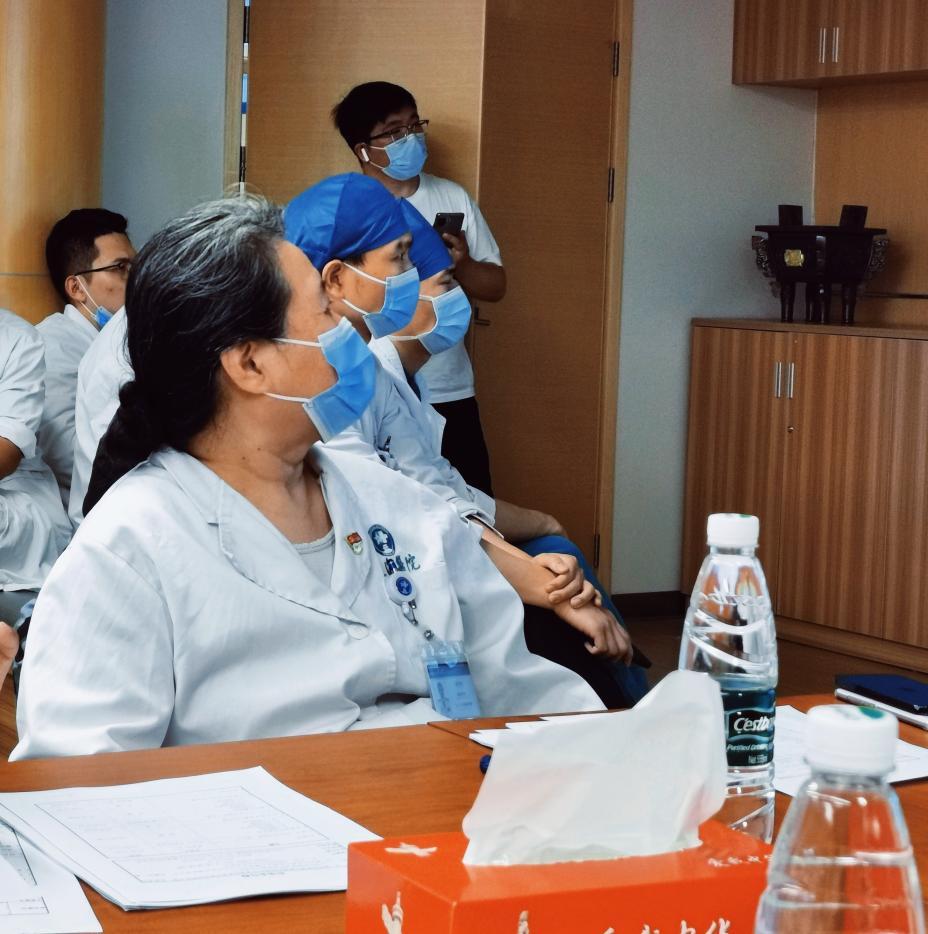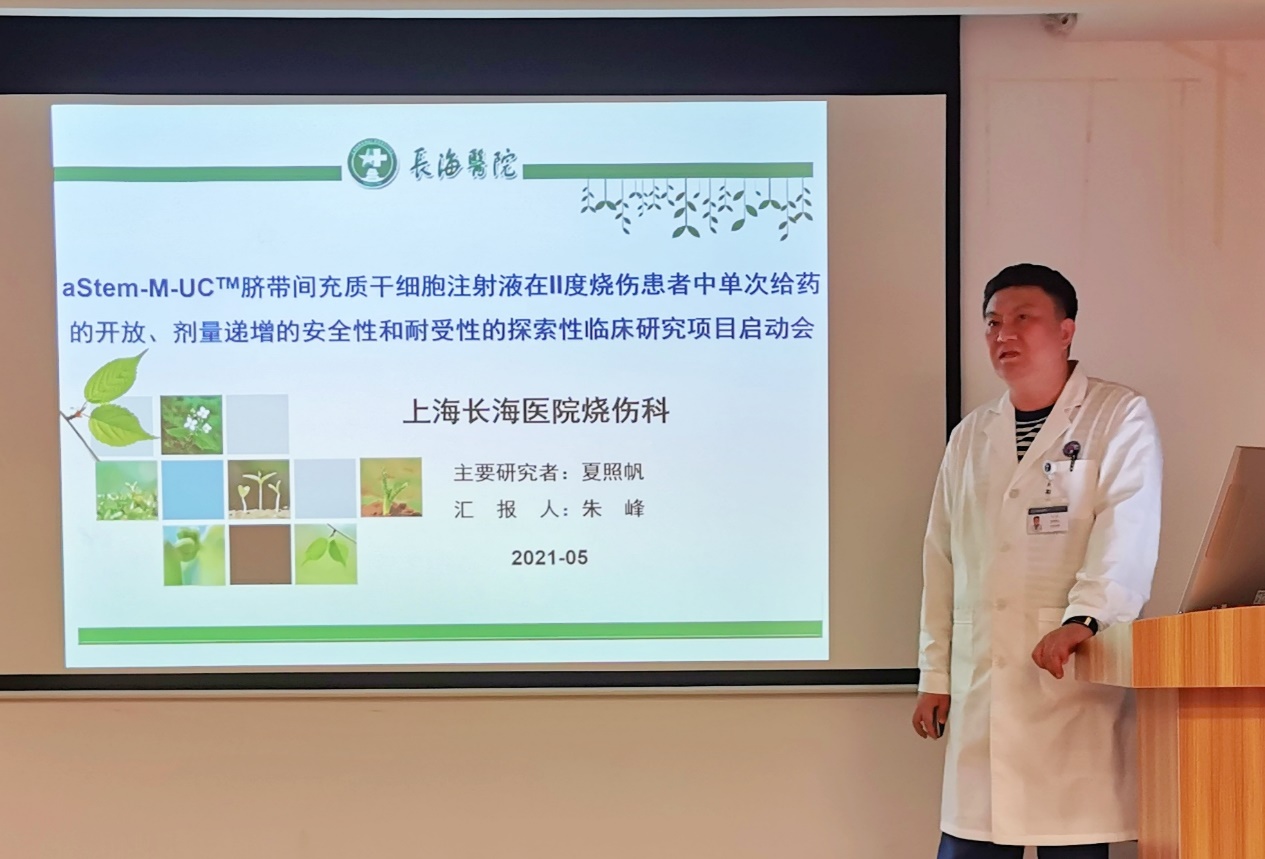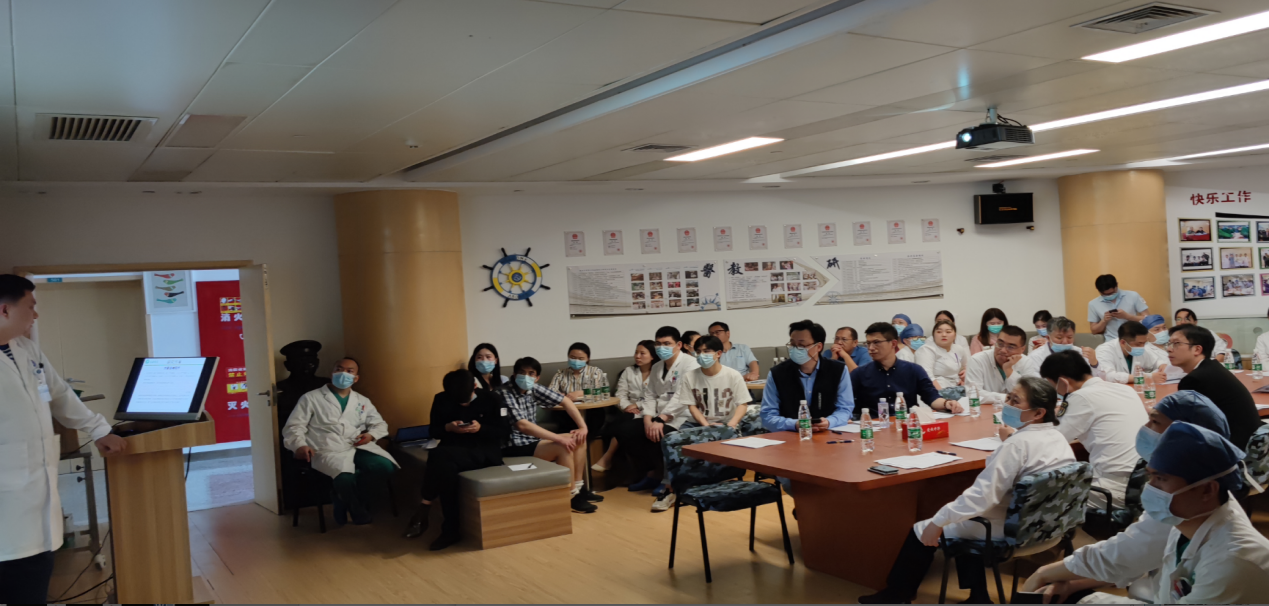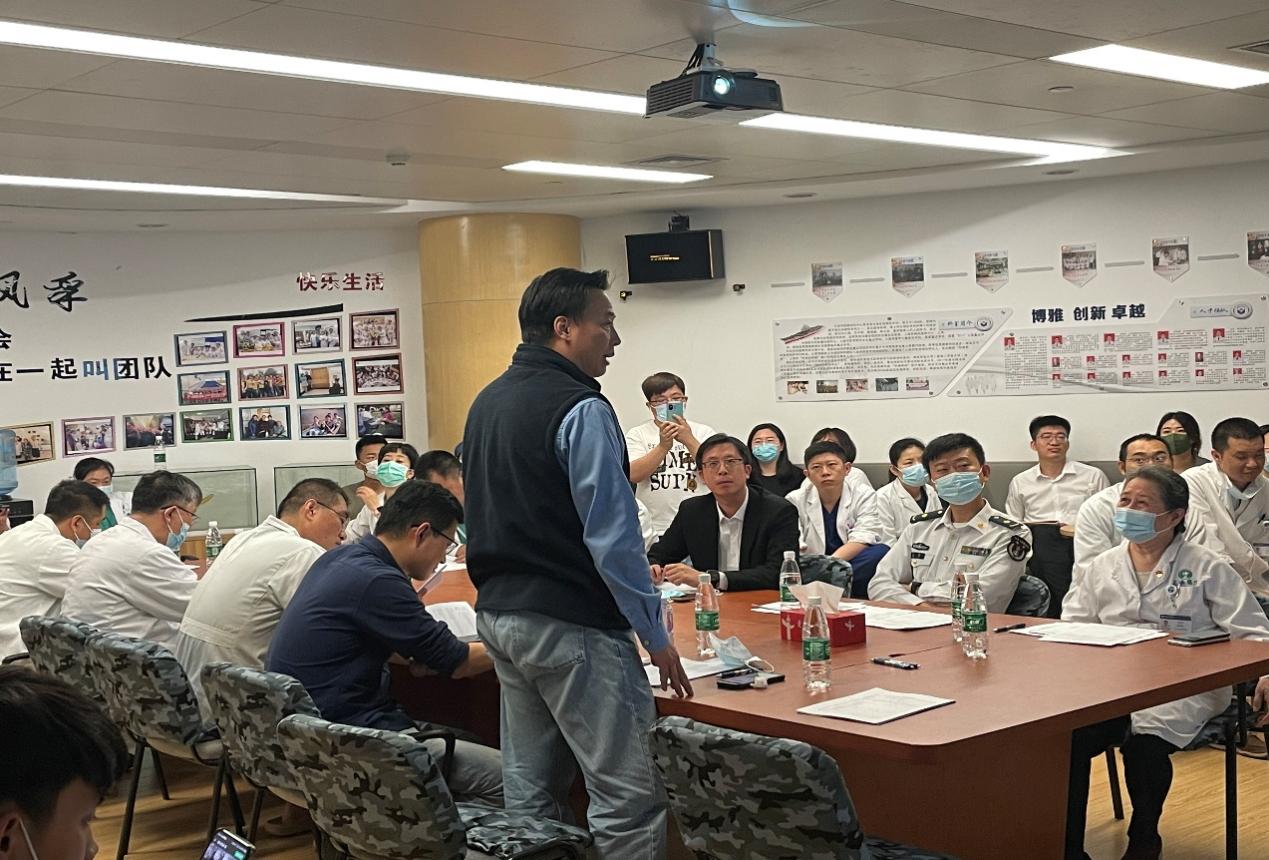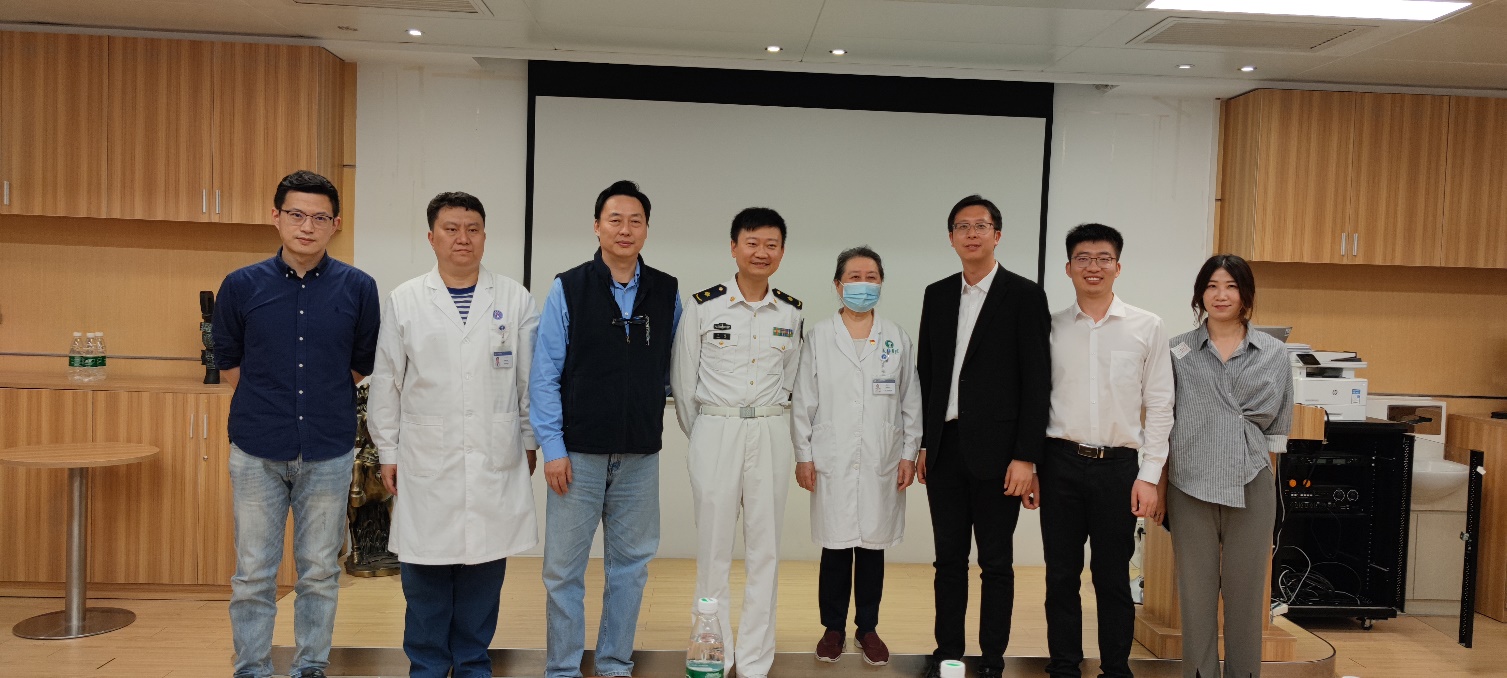aCGT’s umbilical cord mesenchymal stem cell clinical research project for the treatment of burns was launched in Shanghai Changhai Hospital
On May 10, 2021, the project kick-off meeting of the "Exploratory Clinical Study on the Open, Dose-Escalation Safety and Tolerability of Single Administration of aStem-M-UCTM Umbilical Mesenchymal Stem Cell Injection in Patients with Second-Degree Burns" was successfully held in the conference room on the fifth floor of the emergency building of Shanghai Changhai Hospital. More than 10 experts from Shanghai Changhai Hospital, including Academician Xia Zhaofan and Professor Zhu Feng, the main investigators of the project, Professor Qi Nianmin ,chairman of aCGT, Professor Wang Hao and relevant personnel of clinical CRO companies attended the meeting. Academician Xia Zhaofan first delivered a speech, saying that stem cell therapy technology has been included in China's key R&D plan, and the state has formulated a series of relevant policies and regulations to encourage and support stem cell research, which is very supportive of the development of this project, and also proposed that the research team must carry out this clinical project with high standards and implement it in accordance with GCP requirements. Professor Qi Nianmin then spoke, saying that aCGT will continue to strictly abide by the relevant national policies and regulations on stem cells, produce and prepare stem cell preparations that meet GMP clinical grade requirements, and provide support from third-party service organizations that meet GCP requirements, so as to escort the clinical research projects cooperated by the two sides, ensure the smooth development of the project, and solve any problems in the implementation process in a timely and proper manner. Finally, Professor Zhu Feng focused on the clinical protocol design, trial process, investigational drug management, safety events, informed consent, stem cell preparations and other conditions of this stem cell clinical research project. Burns are a global public health problem, causing about 180,000 deaths each year, the fourth leading cause of traumatic diseases, and nearly 11 million burn patients worldwide required medical intervention in 2004. Burns generally refer to the damage to human tissues or organs caused by heat such as flames, hot fluids (water, soup, oil), hot metals (liquid and solid), vapors, and high-temperature gases. Minor burns cause damage only to the skin and/or mucosal tissues or the corresponding deep tissues. However, large-scale burns can cause different degrees of functional, metabolic and morphological changes in various systems of the body, causing serious reactions and internal organ damage throughout the body, and complications such as shock, sepsis and multi-organ failure occur, and the mortality rate is very high. The healing and treatment process of burn wounds is complex and time-consuming. After the wound heals, sequelae such as scarring, contracture, and dysfunction may remain. So far, although the exact mechanism of damage caused by burns, such as internal environment disorders, inflammatory factor expression, and changes in organ structure and function, is still not fully understood, many studies have shown that the healing of burns and the degree of edema and necrosis of cells at the site of injury, the release of inflammatory factors and oxygen free radicals, granulation tissue and angiogenesis, scar repair and reconstruction are closely related, especially hypovolemic shock caused by a large loss of body fluids after burns, which is more worthy of attention, and the sharp decrease in effective blood volume leads to a decrease in circulating blood volume and cardiac output, insufficient tissue perfusion, cellular metabolism and function disorders, decreased tissue repair and renewal ability, and delayed healing or nonunion of wounds. Studies have shown that the application of mesenchymal stem cells after burns can effectively inhibit the proliferation of inflammatory factors and promote the release of anti-inflammatory factors, thereby improving the local microenvironment of the injury and accelerating the healing of burn wounds. Through this clinical study, the clinical treatment plan can be optimized, and the clinical data of stem cell therapy for burns can be accumulated, so as to accelerate the clinical application of mesenchymal stem cells. Shanghai Changhai Hospital, the research institution of the project, was the first batch of military stem cell clinical research filing institutions. The Department of Burns of Shanghai Changhai Hospital is a national key discipline and a key discipline of leading medical specialties in Shanghai, as well as the Shanghai Burn Emergency Center, the All-Army Burn Research Institute and the All-Army Key Laboratory of Shock and Organ Injury Prevention and Control. Changhai Hospital has undertaken more than 30 national projects, including key projects of the National Natural Science Foundation of China and the National Science and Technology Support Program, and won more than 20 high-level awards, including the first prize of the National Science and Technology Progress Award. In 2011, the Burn Department of Shanghai Changhai Hospital was developed into the Burn Trauma Center of Shanghai Changhai Hospital, which has become one of the largest and most complete burn wound bases in China, integrating medical teaching and research. The center has formed new medical characteristics in the fields of wound repair, intensive care medicine, and treatment of multiple and compound injuries. The project partner, Asia Cell Therapeutics (Shanghai) Co., Ltd., has built a "Shanghai Regional Cell Preparation Center" that meets GMP standards in Shanghai Thousand Talents Program Pioneer Park, and is the "Shanghai Cell Therapy Clinical Transformation Engineering Technology Research Center - Core Unit", with a quality system that has passed the ISO9001 certification, and can provide high-standard clinical-grade stem cell preparations that meet the requirements of the State Food and Drug Administration and the National Health Commission, escorting the smooth development of the project. This kick-off meeting is an important milestone event of the project, marking the official launch of the project. It is hoped that through the joint efforts of all parties, we can promote the better and faster development of stem cell therapy technology and new drug research and development in China! 
